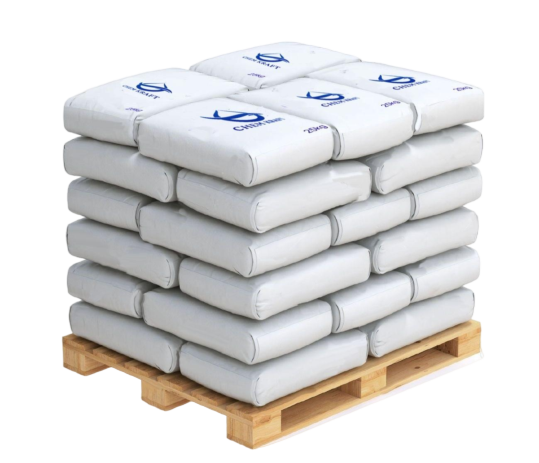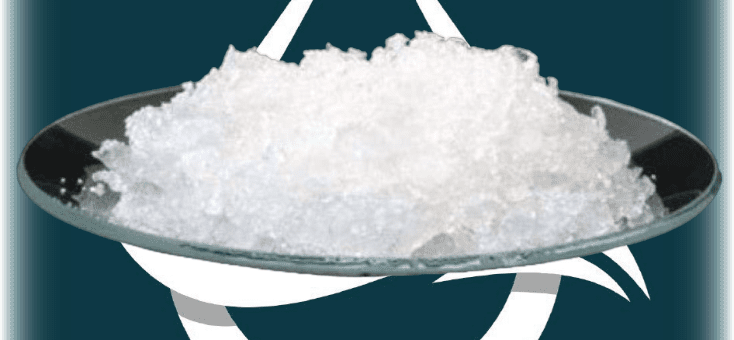CAS NO. 12125-01-8
NH4F CAS NO. 12125-01-8
Ammonium Fluoride
Molecular Formula: NH4F
Mol. Wt: 37.04
Cas No.: 12125-01-8
UN No.: 2505
EINECS: 235-185-9
Synonyms: Ammonium Fluoride, Neutral Ammonium Fluoride
| Molecular Formula: NH4F Molecular Weight:37.04 | ||
| INDEX NAME | INDEX | |
| Analytically Pure A.R | Industrial Grade | |
| NH4F ≥ | 96% | 95% |
| ignition residue ≤ | 0.02 | 0.2 |
| free acid (NH4HF2) ≤ | 0.5 | |
| CI ≤ | 0.005 | 0.05 |
| SO4 ≤ | 0.01 | 0.02 |
| SiO2 ≤ | 0.3 | 0.2 |
| Fe ≤ | 0.002 | 0.01 |
| Pb ≤ | 0.001 | 0.01 |
Physical state: white crystal or granule
Melting point: 98°C
Boiling point: 65°C/760mmHg
Stability: Stable. Incompatible with strong oxidizing agents, water, most common metals, strong bases, strong acids. Attacks glass
Package: 25kg/bag, or according to customer’s requirement
Storage: Store the container tightly closed in a dry, cool and well-ventilated place. It should be stored separately from acids, alkalis, and edible chemicals, and should not be mixed.
Transportation: Dangerous goods, Hazard class:6.1; Package group:III, UN No.:2505
Ammonium fluoride is a binary compound composed of the elements ammonia (NH3) and fluorine (F). It is a highly toxic and corrosive substance that is commonly used in various industrial applications. This essay will discuss in detail the nature of this compound, its properties, and its wide range of applications.
Firstly
it is important to understand the properties of ammonium fluoride. This compound exists as a white crystalline solid with a chemical formula of NH4F. It has a strong odor and is highly soluble in water. In terms of structure, ammonium fluoride consists of ammonium ions (NH4+) and fluoride ions (F-) held together by ionic bonds. Due to its corrosive nature, this compound is handled with extreme caution and proper safety measures.

Ammonium fluoride has numerous applications across different industries. One of its primary uses is as a chemical ingredient in etching and cleaning agents. Its corrosive properties make it an ideal component in etching solutions used in the semiconductor industry for the production of microchips and other electronic devices. In addition, this compound is utilized in the manufacturing of glass. It is added to improve the durability and strength of various types of glass, including laboratory glassware and optical lenses.
Other Applications
Furthermore, ammonium fluoride is also employed in the synthesis of various organic compounds. It acts as a catalyst or reactant in certain chemical reactions, such as the conversion of aldehydes to alcohols or the formation of complex organic molecules. This compound can also be found in some dental products, particularly in fluoride treatments and mouthwashes. These products help prevent tooth decay and promote oral health.
Another important application of ammonium fluoride is in the realm of metallurgy. It is used as a fluxing agent in the preparation of metals for casting or soldering. The flux helps to remove impurities and improve the overall quality of the metal alloys. Additionally, this compound is utilized in the production of specialized materials such as aluminum fluoride, which is used as a catalyst in the petroleum industry.
Despite its numerous applications, it is crucial to handle ammonium fluoride with care due to its hazardous nature. Direct contact with this compound can lead to severe burns and irritation to the skin, eyes, and respiratory system. Proper protective equipment and precautions should be taken when handling this compound in any setting.
In conclusion
Ammonium fluoride is a toxic and corrosive compound widely used in various industries for its unique properties. Its applications range from etching and cleaning agents, glass manufacturing, organic synthesis, dental products, metallurgy, and petroleum refinement. While its uses are diverse and beneficial, safety measures must be taken to ensure its proper handling. This compound continues to play a vital role in various industrial processes, making it an essential compound in today’s world.


